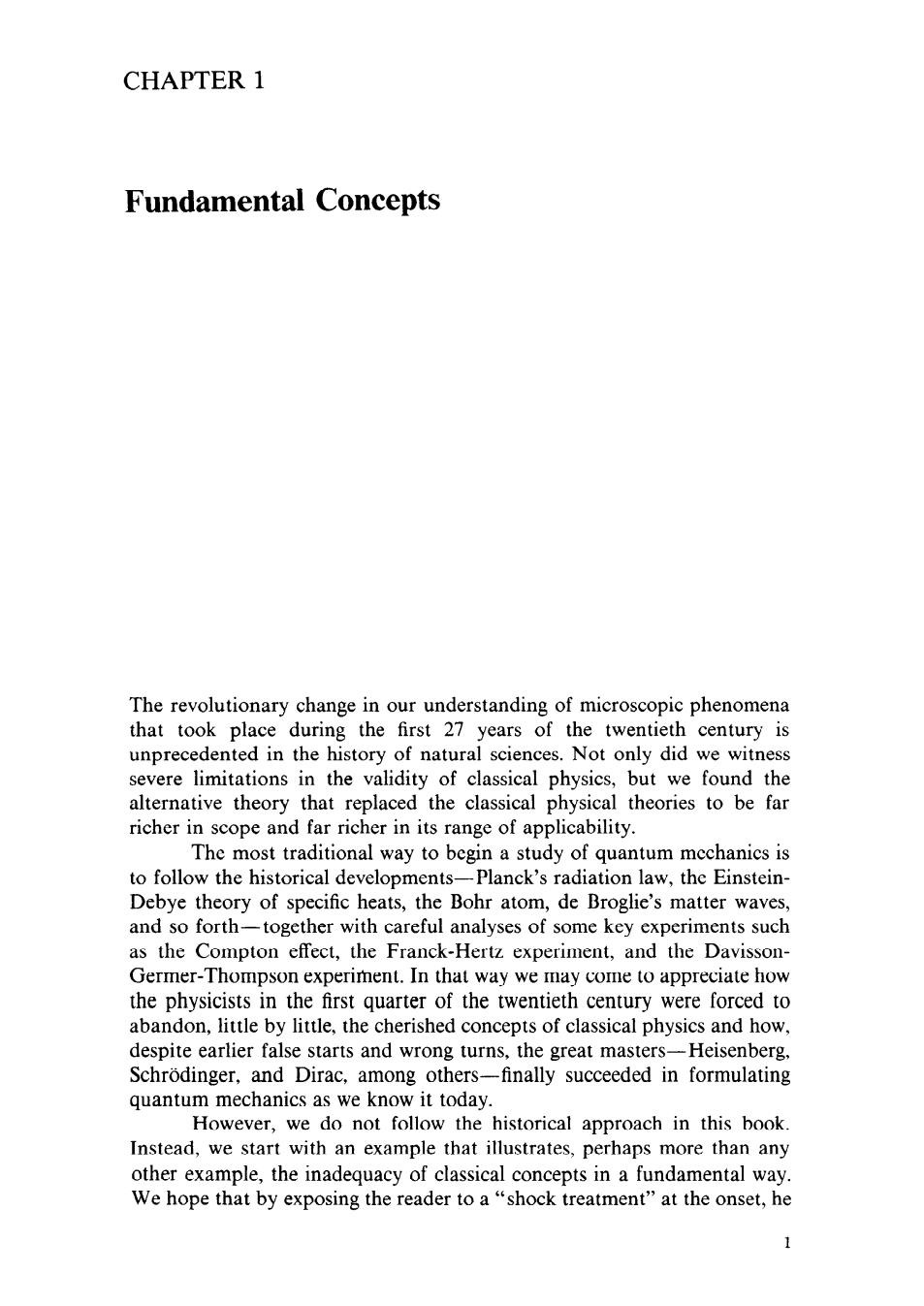正在加载图片...

CHAPTER 1 Fundamental Concepts The revolutionary change in our understanding of microscopic phenomena that took place during the first 27 years of the twentieth century is unprecedented in the history of natural sciences.Not only did we witness severe limitations in the validity of classical physics,but we found the ernative theory that replaced the classical physic al theories to be far richer in scope and far richer in its range of applicability. The most traditional way to begin a study of quantum mechanics is to follow the historical developments-Planck's radiation law,the Einstein- Debye thec ry of sp cific heats,the Bohr atom ,de Broglie's matter wave and so forth-together with careful analyses of some key experiments such as the Compton effect,the Franck-Hertz experiment,and the Davisson- Germer-Thompson experiment.In that way we may come to appreciate how the physicists in the first quarter of the twentieth century were forced to abandon,little by little,the cherished concepts of classical physics and how despite earlier false starts and wrong turns,the great masters-Heisenberg. Schrodinger,and Dirac,among others-finally succeeded in formulating quantum mechanics as we know it todav. ever,we do not follow the historical approach in this book Instead,we start with an example that illustrates,perhaps more than any other example,the inadequacy of classical concepts in a fundamental way. We hope that by exposing the reader to a"shock treatment"at the onset,he